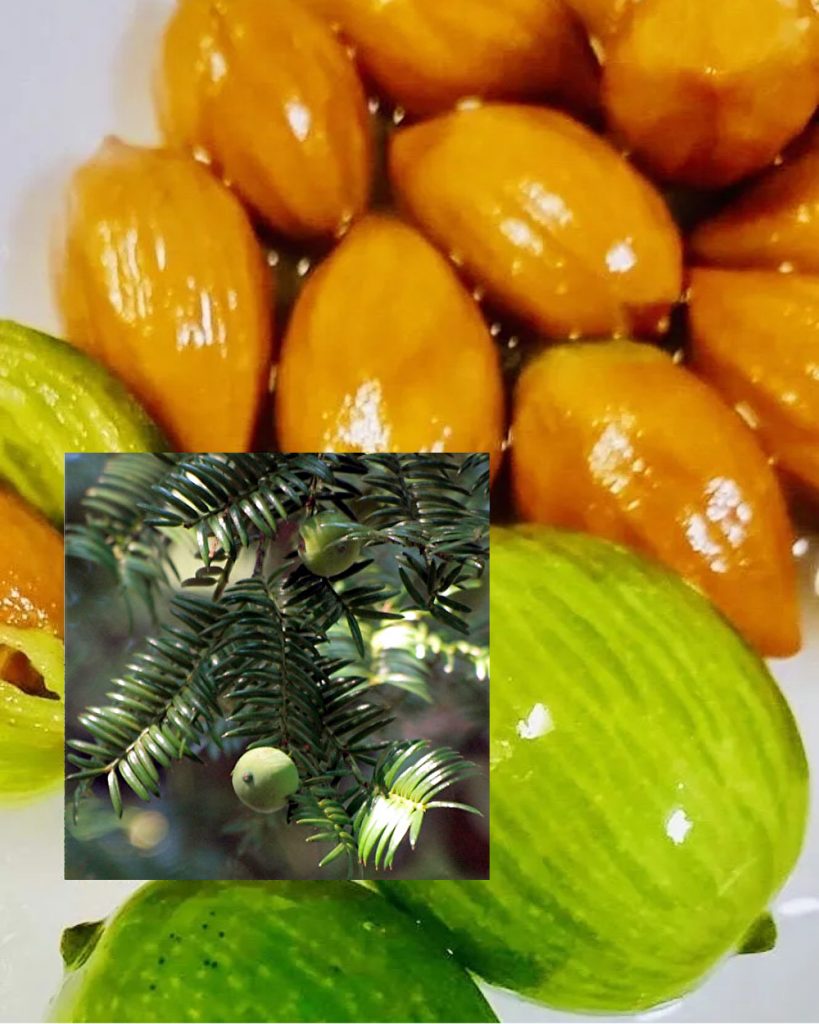
I remembered this while looking at the “Manjushage” flowers, but there’s a haiku by Kitahara Hakushu that goes, “On the kaya tree, With kaya nuts now hanging, Loneliness descends,” which means the loneliness felt when kaya nuts grow on a kaya tree, signaling the arrival of winter. Kaya is an evergreen coniferous tree that can grow up to 20 meters tall, with a trunk circumference of up to 3 meters. It blooms with flowers in spring, around April to May, and its fruit forms in September to October of the following year. The fruit is wrapped in thick green skin, and when you peel it, you find sticky reddish-brown seeds. You can’t eat them as they are, so after removing the bitterness in various ways and roasting them, you get nuts with a flavor reminiscent of a mixture of chestnuts and walnuts.
A long time ago, when I went to Nozawa Onsen, I remembered that I was using the hot spring water to remove the scum from the kaya nuts that I had placed in a net. Furthermore, kaya has been used since the Jomon period not only for food but also for lamp oil and anthelminthic. Its wood is excellent for carving Buddhist statues, making top-quality Shogi boards, and Go boards.
「曼珠沙華(ひがんばな)」で思い出しましたが、北原白秋の俳句に「榧の木に榧の実のつくさびしさよ」と言う句があります。榧の木に榧の実がついてもう冬が来ると感じるさびしさよ、と言う意味の句です。榧は常緑針葉樹の高木で、樹高は20mにも達し、幹回りは3mにもなります。春の4〜5月に花を咲かせ、実は翌年の9 〜10月にできます。実は緑色の厚い皮に包まれていて、皮を剥くとねばねばの赤褐色の種がでます。このまま食べることはできないので、様々の方法でアク抜きをして炒ると、栗と胡桃が混ざった様な味のナッツができあがります。昔、野沢温泉に行った時、湧き湯で網に入れた榧の実のアク抜きをしていた事を思い出しました。また、榧は、縄文の昔から、食用だけでなく、灯油や虫下しにも使われましたし、木は材質としても優れ、仏像彫刻や、最高級の棋盤や碁盤にも使われます。
